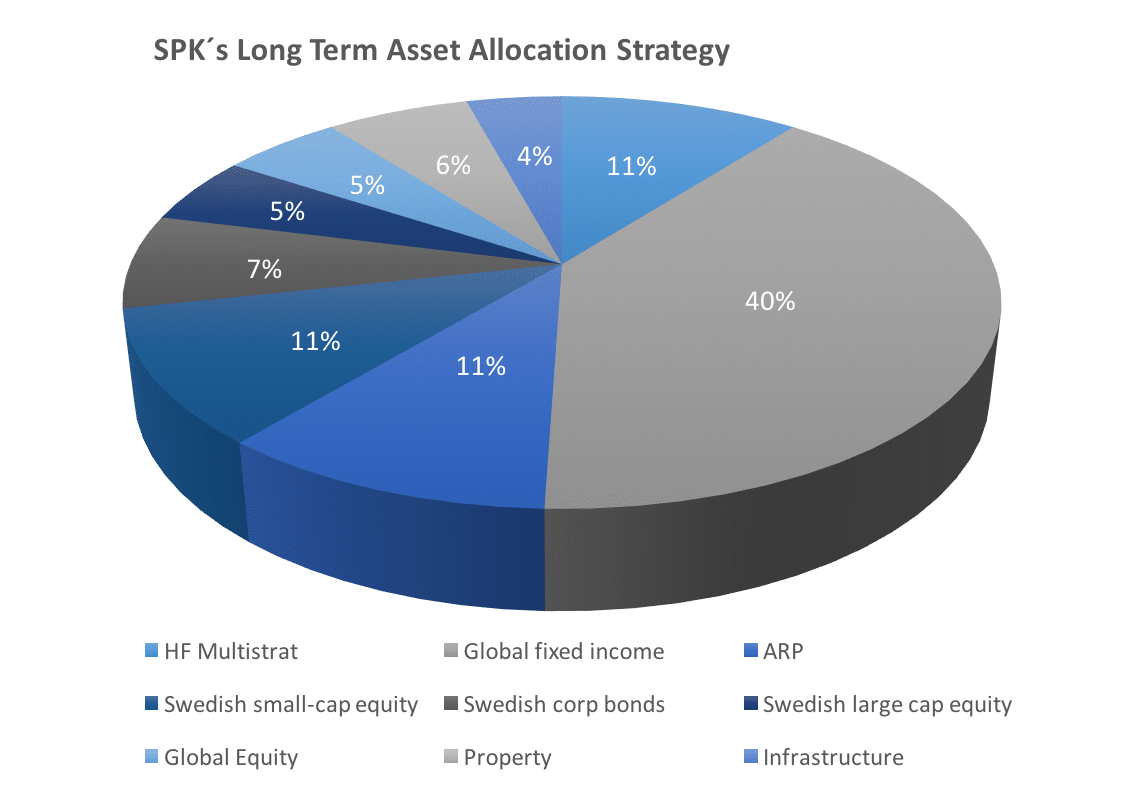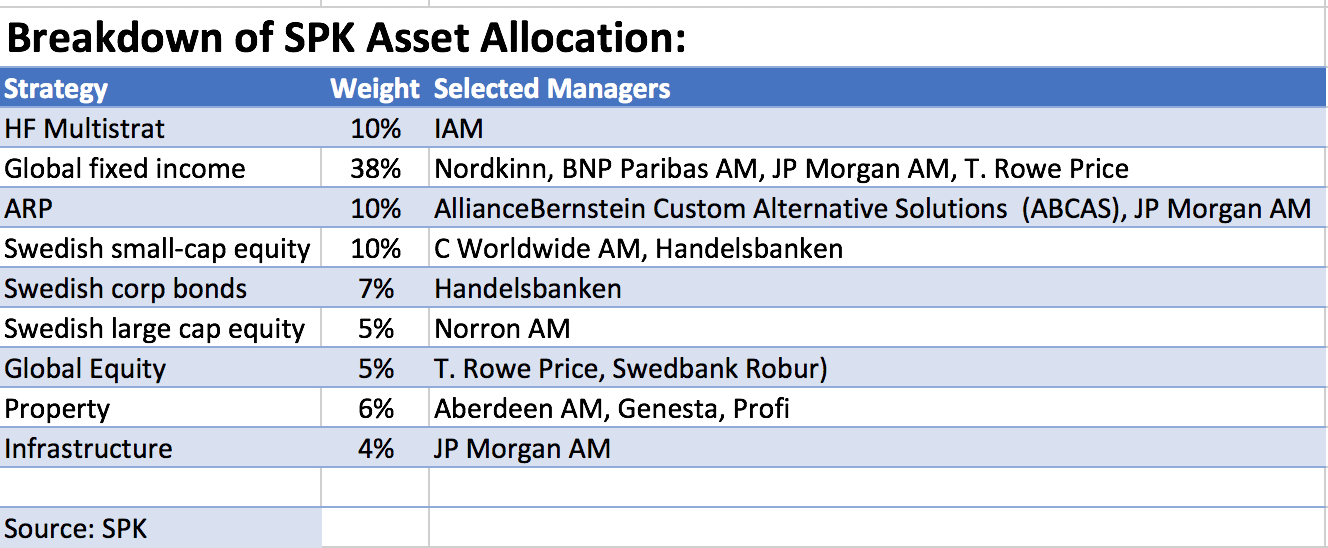London (HedgeNordic) – SPK, the pension fund for the Swedish savings institutions, has overhauled its hedge fund portfolio quite dramatically over the course of the past few years, having divested from the sector for many years.
Stefan Ros, the chief investment officer of the fund joined the company in 2007 and at the time SPK did have a number of hedge fund investments. “The role of the hedge fund investments was not immediately clear so we decided to divest in 2008, which turned out to be excellent timing,” he said.
Over the next few years, SPK stayed out of the hedge fund space but once a long-term strategic overhaul was undertaken between 2012 and 2014, hedge funds were again of interest. Up to 2012 SPK had only two main sources of alpha; duration and equity risk premium. “We were keen on finding a larger number of diversified sources of alpha which led us to consider hedge funds again,” Ros explained.
The strategy shift resulted in four asset classes; equities, bonds, real estate and alternatives. “Key was to increase the number of return sources and uncorrelated investments. We had concerns about the fees, investment vehicles and hurdle rates within the hedge funds industry. This led to looking at alternative risk premia (ARP) which are long and short and contains little directionality but have a more systematic investment approach. If we could catch 80% of the average multi-strat fund performance in a highly liquid way but at a third of the cost, it wereso much better value for money,” Ros said.


“We are willing to pay for skill but not hidden beta and this is not always easy to discern. This picture is clearer with ARPs. We view it as alternative beta,” he said.
In 2013-2014 ARP were not well established among (Swedish) institutional investors, partly because not many ARP managers could show a reliable and long live track record, and SPK did not go all in. Instead, they decided to go 50/50 between ARP and multi-strat hedge funds within their alternative allocation bucket. “In general we wanted to increase the active portion and reduce beta risk in the portfolio, and thereby be able to make money in various market scenarios,” he said, noting that SPK has hedge funds in other return buckets than only alternatives. For instance, SPK uses Nordkinn for a fixed-income macro hedge fund mandate.
One of the major changes in recent years has been divesting from Brummer & Partner’s multi strategy fund in 2017 as a result of poor performance. Instead, SPK hired IAM in September 2018. However, Ros wants to emphasise that the main issue with Brummer & Partners was that the strategy no longer fits SPK’s needs. “We had a great working relationship with them and they were quick to respond to, for instance, the ESG concerns we had,” he added.
Before appointing IAM, SPK looked into the possibility of building its own in-house hedge fund team but realised that the costs and time involved would not make sense. “We view our relationship with IAM as them being SPK’s external hedge fund department. This is something that takes time to build and we had known IAM for 10 years. It takes not only track record but also understanding and transparency for a partnership to work well,” Ros said.
On the process of finding and hiring external managers Ros said operational due diligence is important and issues such as head-line risks are on top of the agenda. This was one aspect where IAM stood out in a positive way, he said, adding that IAM is big enough to have the resources necessary to be able to have in-depth research and analysis capabilities but still small enough to have a close relationship with clients. “The ability and willingness to adapt to the client’s needs is vital,” he said. SPK does not use external advisors in general and instead managers can show their interest by contacting SKP via their website.
Another important criteria is liquidity which is why SPK sees a lot of benefits with the UCITs structure. “The regulatory landscape for pension funds and investors is continuously changing. We have to have enough liquidity in the portfolio to be able to adapt to new recommendations as and when they are introduced,” he said.

In addition, transparency is important and according to Ros, IAM has high requirements and SPK is able to have the access it needs. SPK also has sustainability requirements such as adhering to UNPRI for instance. “Hedge funds have been slightly behind the curve on ESG issues. However, there is a greater understanding these days for these. We have a few exclusion criteria but our main approach and policy is to push our asset managers. We prefer constructive dialogue as long as there is a willingness to improve,” he said.
One of the remaining issues for the hedge fund industry is hurdle rates, according to Ros. “It is not OK that the performance fee should kick in as soon as the return is above zero because that is not skill to me. For the same amount of risk or volatility I could instead allocate to something more traditional where the expected return is clearly higher than zero,” he explains.
Ros said ARPs had a poor 2018, which is not so much the fault of the managers, just the current investment climate. SPK is continuously looking into how to improve diversification and is considering creating additional pockets such as trend-following strategies. “We want to discuss any potential additions in-depth and be clear on what we want and what we expect new strategies to do for our overall portfolio before we invest,” he concluded.
